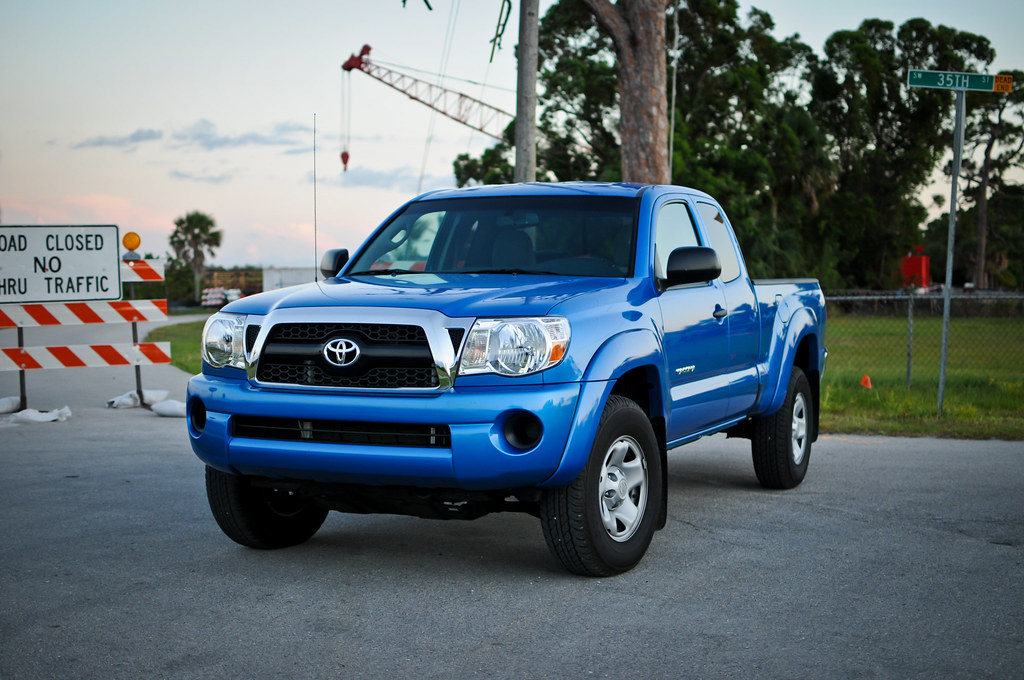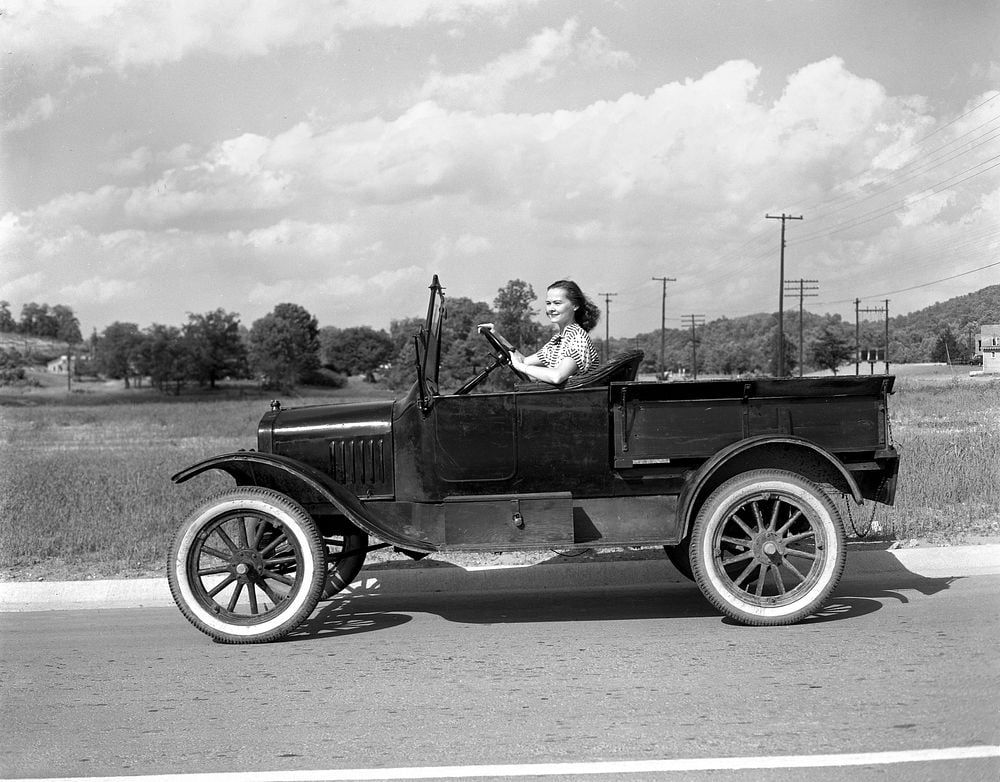
The automotive landscape is a fascinating arena, brimming with innovation, ambition, and, inevitably, a fair share of missteps. Every year, manufacturers roll out new models, some heralded as game-changers, others as affordable entry points to luxury, or even as solutions to urban mobility. The buzz around these vehicles often reaches a fever pitch, fueled by savvy marketing, exciting concept reveals, and the inherent human desire for the next big thing on four wheels.
However, as any seasoned car enthusiast knows, the road from concept to consumer reality is paved with unforeseen challenges. Sometimes, a vehicle that promises to revolutionize a segment or redefine a brand ends up doing little more than gathering dust on dealership lots. These aren’t just minor disappointments; they are often spectacular failures, vehicles that despite immense hype, simply could not deliver on their grand promises, leaving both critics and eager buyers scratching their heads.
In this deep dive, we’re taking a critical look at some of the most prominent automotive letdowns. We’re going beyond mere sales figures to dissect the fundamental flaws – be it design miscalculations, performance deficiencies, reliability nightmares, or just a complete misunderstanding of market expectations – that turned these highly anticipated machines into monuments of regret. Prepare to explore a collection of cars that, for various reasons, drove straight into the annals of automotive disappointment, proving that not all that glitters on the showroom floor is truly gold.

1. **Lincoln Blackwood**
The early 2000s saw Lincoln, fresh off the success of its Navigator SUV, attempt to push into the luxury pickup truck segment. The market for high-end pickups, now common, was then largely uncharted territory. Lincoln envisioned a vehicle that blended opulent comfort with truck utility, and thus, the Blackwood was born – a reworked Ford F-150 draped in leather and wood veneer, featuring a retuned suspension and prominent Lincoln branding. It was poised to redefine luxury utility.
However, the Blackwood’s most distinctive feature also proved to be its ultimate undoing. Lincoln replaced the traditional truck bed with a carpet-lined storage compartment, complete with a power tonneau cover. This design choice effectively rendered it nearly useless for typical pickup duties, stripping away the core functionality that defines such a vehicle. Furthermore, its rear-wheel-drive-only configuration severely limited its practicality in adverse weather or for serious hauling.
In essence, Lincoln removed the fundamental advantages of owning a pickup, then affixed a premium price tag to a vehicle that couldn’t fulfill basic truck functions. This fundamental disconnect between its luxurious presentation, its price, and its lack of utility left many potential buyers perplexed. Unsurprisingly, the Blackwood’s sales flopped dramatically. It was discontinued after just a single year on the market, serving as a swift and stark reminder of the critical importance of understanding a vehicle’s core purpose, even when attempting to push boundaries in luxury.
Car Model Information: 2002 Lincoln Blackwood 2WD
Name: Lincoln Blackwood
Manufacturer: Lincoln Motor Company
Production: September 25th 2000 – August 8th, 2002
ModelYears: 2002 (United States),2002–2003 (Mexico)
Assembly: Claycomo, Missouri
Successor: Lincoln Mark LT
Class: luxury car,pickup truck
BodyStyle: pickup truck
Layout: Front-engine, rear-wheel drive layout
Related: Ford F-Series (tenth generation),Lincoln Navigator
Engine: Ford Modular engine#5.4 L
Transmission: Automatic transmission
Wheelbase: 138.5 in
Abbr: on
Length: 220.2 in
Width: 78.0 in
Height: 73.6 in
Designer: Patrick Schiavone
Caption: 2002 Lincoln Blackwood
Categories: All articles with unsourced statements, Articles with short description, Articles with unsourced statements from November 2024, Cars discontinued in 2002, Cars introduced in 2001
Summary: The Lincoln Blackwood is a luxury pickup truck that was marketed by the Lincoln division of Ford Motor Company for the 2002 model year. The first pickup truck marketed by Lincoln, the Blackwood was derived from the Ford F-150 SuperCrew and the Lincoln Navigator. Drawing its name from its simulated black woodgrain cargo box, the Blackwood was offered solely with a black-painted exterior.
Although the concept vehicle had a positive public reception, the production Blackwood fell far under sales projections in the United States and Mexico. After the 2002 model year, the Blackwood was discontinued in the United States, with a short run of 2003 models produced for Mexico. In total, only 3,383 units (NOT the commonly quoted 3,356 number) were produced, making it both the rarest and shortest-produced Lincoln model line.
For 2006, Lincoln entered the pickup truck segment for a second time with the Lincoln Mark LT — again based on the Ford F-150 —which, even though it also sold poorly, was more popular than the Blackwood.
The first Lincoln vehicle manufactured exclusively outside of the state of Michigan since 1958, the Blackwood was assembled by Ford at its Kansas City Assembly facility in Claycomo, Missouri, alongside the F-150 from September 2000 to August 2002.
Get more information about: Lincoln Blackwood
Buying a high-performing used car >>>
Brand: Lincoln Model: Blackwood
Price: $14,499 Mileage: 77,219 mi.
Read more about: These 15 Rides Went From Head-Turners to Cringe-Worthy—Do You Remember Them?
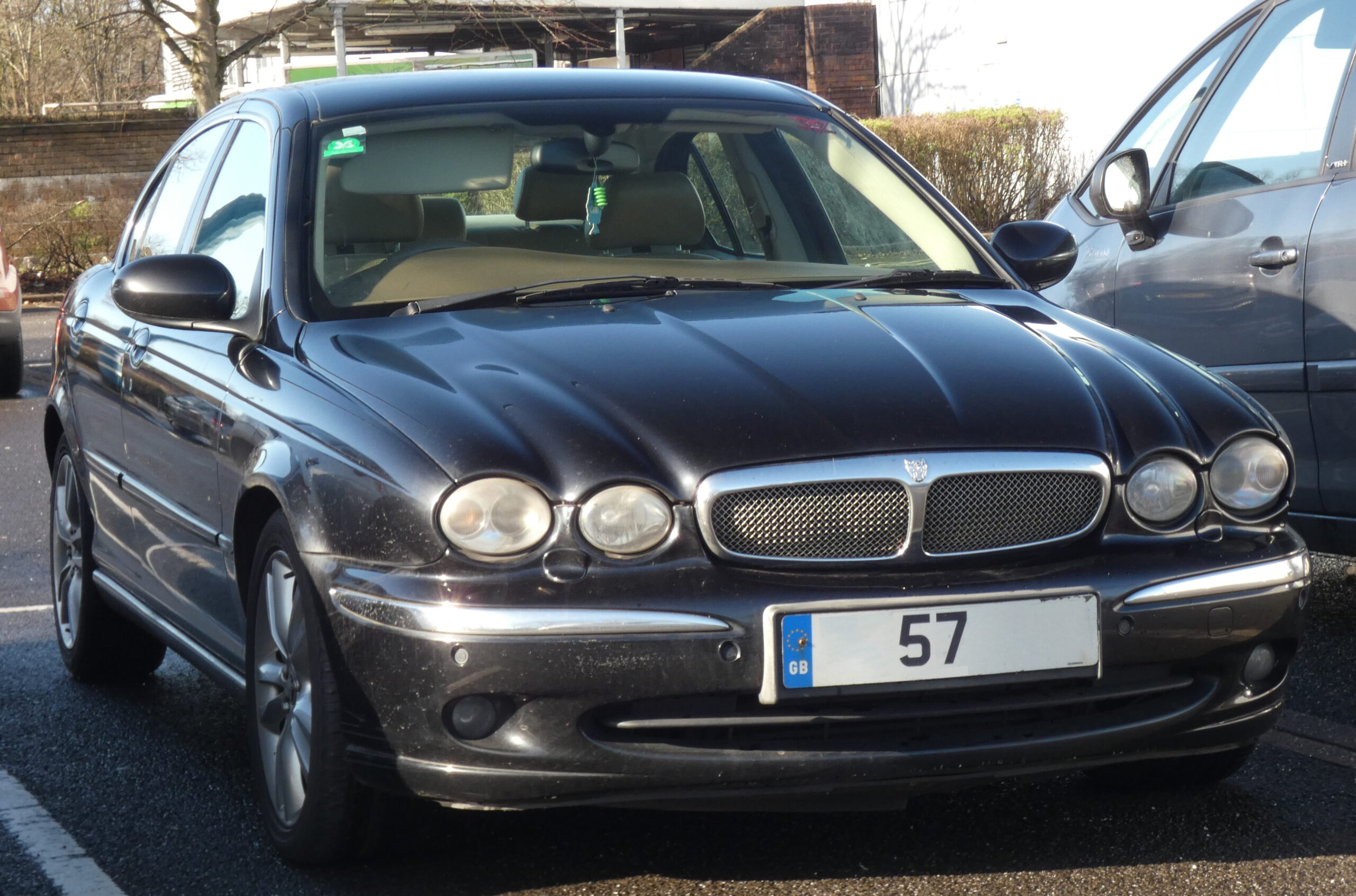
2. **Jaguar X-Type**
Jaguar, a brand steeped in British prestige and known for sleek, high-end engineering, generated significant anticipation with the X-Type’s unveiling. This model was intended as Jaguar’s direct competitor in the compact executive car market, targeting the BMW 3 Series and Mercedes-Benz C-Class. With Ford’s substantial financial backing, it seemed Jaguar finally had the resources to make a strong entry into this competitive segment, promising a new era for the marque.
Unfortunately, the X-Type’s reality starkly diverged from its promise. Debuting in 2001, critics quickly noted its fundamental flaw: it shared underpinnings with the more budget-friendly Ford Mondeo. This shared DNA was painfully evident in its driving dynamics and proportions, undermining its luxury aspirations. The vehicle struggled to embody the refinement, engaging handling, or inherent prestige expected of a Jaguar.
Critics were unforgiving, pointing out its uninspired design, lackluster driving experience, and an overall sense of cheapness. It simply failed to deliver the premium character essential for its segment. Jaguar had initially projected ambitious annual sales of 100,000 units, yet the X-Type barely surpassed 50,000 in its best year. By the time Jaguar and Ford parted ways, the consensus was clear: the X-Type was a significant misstep, best left as a cautionary tale in Jaguar’s history.
Car Model Information: 2006 Jaguar X-Type 3.0
Name: Jaguar X-Type
Manufacturer: Jaguar Cars
Production: 2001–2009,355,227 produced
Assembly: Halewood
Class: Compact executive car
BodyStyle: Sedan (automobile),Station wagon
Layout: Front-engine, front-wheel-drive layout,Front-engine, four-wheel-drive layout
Platform: Ford CD132 platform
Designer: Geoff Lawson (designer),Ian Callum
Related: Ford Mondeo (second generation)
Engine: Jaguar AJ-V6 engine#AJ20,Jaguar AJ-V6 engine#AJ25,Jaguar AJ-V6 engine#AJ30,Ford Duratorq engine#2.0,Ford Duratorq engine#2.2
Transmission: Manual transmission,Manual transmission,Jatco JF506E transmission,AWTF-80 SC
Wheelbase: 106.7 in
Abbr: on
Length: 4672 mm
Width: 70.4 in
Height: 54.8 in
Successor: Jaguar XE
ModelYears: 2002–2009
Categories: ANCAP large family cars, All-wheel-drive vehicles, All articles with dead external links, Articles with dead external links from February 2019, Articles with short description
Summary: The Jaguar X-Type is a front-engine, all-wheel/front-wheel drive compact executive car manufactured and marketed by Jaguar Cars from 2001 to 2009 under the internal designation X400, for a single generation, in sedan/saloon and wagon/estate body styles. In addition to offering Jaguar’s first station wagon/estate in series production, the X-type would ultimately introduce its first diesel engine, four-cylinder engine and front-wheel drive configuration.
The X-Type was developed during the period when Jaguar was owned by Ford as a division of its Premier Automotive Group (PAG) (1999–2010) — and marked Jaguar’s entry into the critical compact executive segment. The programme aimed to double the marque’s worldwide sales — requiring expansion of engineering resources, factory capacity, marketing capability, sales support and service. At launch, Autocar called the X-Type “the most important Jaguar ever”.
With annual projections of 100,000 sales, the X-Type recorded a production of 350,000 over its eight-year manufacturing run.
Get more information about: Jaguar X-Type
Buying a high-performing used car >>>
Brand: Jaguar Model: X-Type
Price: $4,995 Mileage: 140,309 mi.
Read more about: Look Like a Million Bucks on a Budget: 10 Jaw-Dropping Cars That Offer Luxury Without the Lavish Price Tag
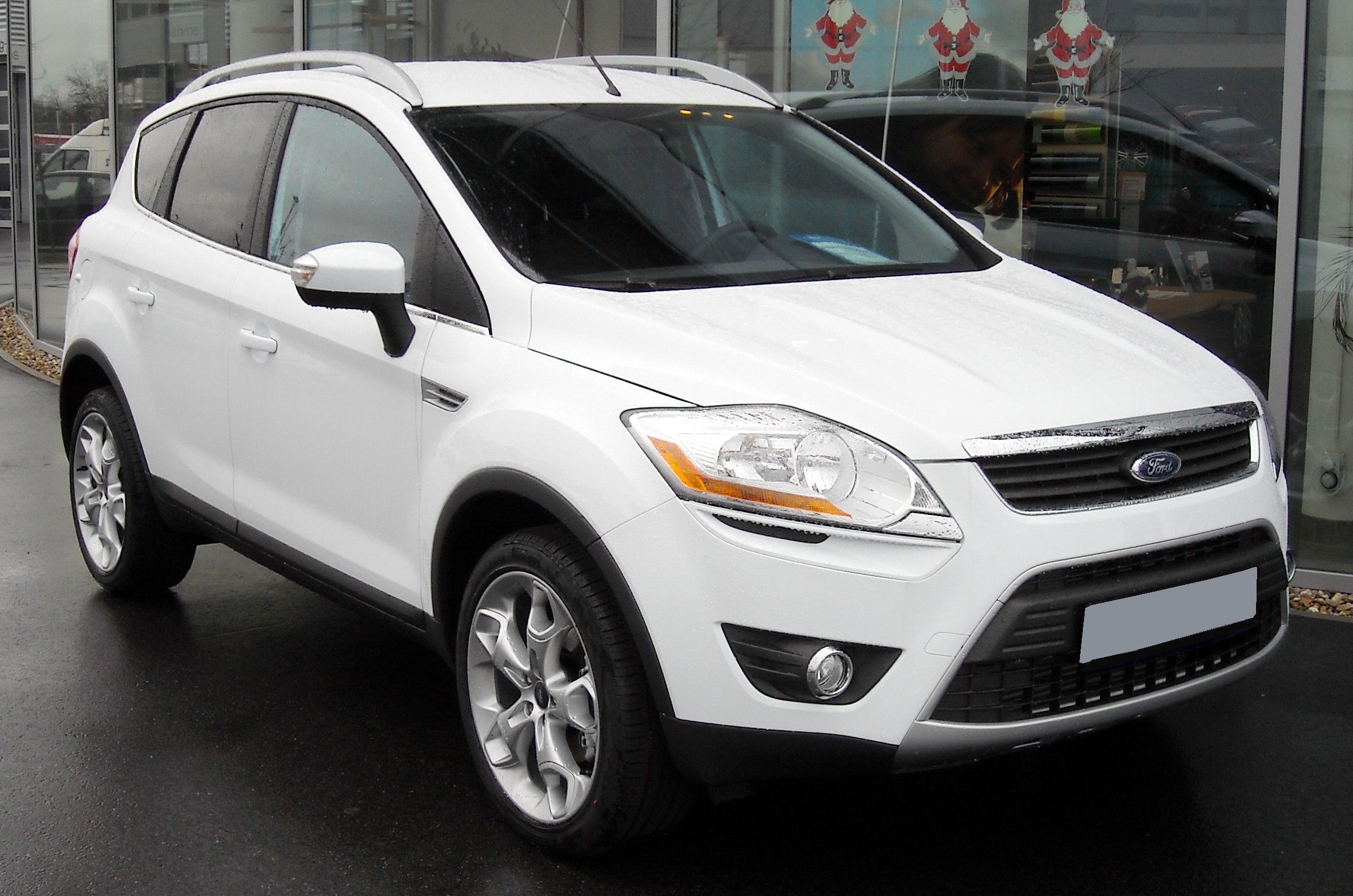
3. **Ford EcoSport**:
Ford introduced the EcoSport to North America in 2018 with high hopes, aiming to capture a share of the booming subcompact SUV market. Having found success in regions like South America and India, the move seemed strategic. However, Ford critically misjudged the expectations of North American consumers, offering a vehicle that felt both outdated and cheaply built compared to its rivals, diminishing its chances from the start.
The U.S. version of the EcoSport suffered from a cramped cabin, underpowered engines, and a dull driving experience, doing little to excite drivers or justify its market position. Its most distinctive feature, an external spare tire carrier, felt anachronistic and out of place in modern aesthetics, further highlighting the vehicle’s lack of contemporary refinement tailored for the American market. It was a design choice that spoke volumes about its global origins rather than local adaptation.
In a fiercely competitive segment, the EcoSport was immediately outmatched. Rivals like the Honda HR-V and Mazda CX-3 offered superior refinement, comfort, and advanced technology, making the Ford offering easy to overlook. With fundamental shortcomings and an inability to resonate, the EcoSport was quietly discontinued in 2022. Its departure garnered little lament, serving as a reminder that what works elsewhere doesn’t always translate into success in a discerning market.
Car Model Information: 2018 Ford EcoSport SE
Name: Ford EcoSport
Manufacturer: Ford Motor Company
Production: 2003–2022
ModelYears: 2014–2022 (Europe) and 2018–2022 (North America)
Class: Subcompact crossover SUV
BodyStyle: Sport utility vehicle
Layout: Front-engine, front-wheel-drive layout
Categories: 2010s cars, 2020s cars, All-wheel-drive vehicles, All articles with bare URLs for citations, All articles with unsourced statements
Summary: The Ford EcoSport ( EK-oh-sport) is a subcompact crossover SUV (B-segment) manufactured by Ford between 2003 and 2022.
The first-generation model was developed and built in Brazil by Ford Brazil since 2003, at the Camaçari plant. The second-generation model was launched in 2012, which was assembled in factories in India, Thailand, Russia and Romania. The vehicle entered the European market in 2014 and the North American market in 2018. It was sold in both until its discontinuation after the 2022 model year. Throughout its existence, the EcoSport shared its platform with the Fiesta.
Get more information about: Ford EcoSport
Buying a high-performing used car >>>
Brand: Ford Model: EcoSport
Price: $6,620 Mileage: 156,423 mi.
Read more about: From Chrome Karts to Custom Monsters: 14 Wild Rides of the Rich and Famous That’ll Make You Say ‘Wait, What?!’

4. **Cadillac ELR**:
The Cadillac ELR exemplifies the pitfalls of corporate influence over product development, stifling genuine innovation. Conceptually, it held promise: adapting the Chevrolet Volt’s proven extended-range electric powertrain into an upscale Cadillac package, blending efficiency with luxury. This seemed like a logical step for both the brand and the evolving market towards greener vehicles, aiming for premium eco-consciousness.
However, the execution was largely superficial. Despite sleek Cadillac styling, the ELR offered no meaningful improvements in performance, electric range, or technology over its cheaper Volt sibling. It was, in essence, an overpriced, rebadged Volt, a fact that discerning buyers quickly perceived. The lack of substantive differentiation became its Achilles’ heel, preventing it from truly standing as a Cadillac innovation.
With a steep, hard-to-justify price, uninspiring driving dynamics, and a range that paled against emerging fully electric rivals, the ELR was doomed. Sales were abysmal, leading Cadillac to pull the plug after just two years, with fewer than 3,000 units sold. Today, the ELR remains a rare hybrid curiosity, often unrecognized, serving as a cautionary tale: superficial luxury without genuine innovation leads to spectacular market failure and a forgotten legacy.
Car Model Information: 2014 Cadillac ELR Base
Name: Cadillac ELR
Caption: 2014 Cadillac ELR
Manufacturer: General Motors
Production: 2013–2016,2,958 produced
ModelYears: 2014 and 2016
Assembly: Detroit/Hamtramck Assembly
Class: Compact car
BodyStyle: coupé
Layout: Front-engine, front-wheel-drive layout
Platform: GM Delta II platform
Engine: GM Family 0 engine#Generation III,inline-four engine
Transmission: continuously variable transmission
Battery: kWh,lithium-ion battery
Range: 340 mi
Abbr: on
ElectricRange: 37 mi
Drivetrain: Series hybrid
Wheelbase: 2695 mm
Length: 4724 mm
Width: 1847 mm
Height: 1420 mm
Weight: 1846 kg
Related: Chevrolet Volt
Designer: Exterior: Tim Kozub,Interior: Keith Fisher
Sp: us
Categories: All articles with dead external links, Articles with dead external links from August 2025, Articles with dead external links from February 2025, Articles with permanently dead external links, Articles with short description
Summary: The Cadillac ELR is a two-door, four-passenger luxury plug-in hybrid compact coupé manufactured and marketed by Cadillac for model years (MY) 2014 and 2016 – with a hiatus for MY 2015. Using a retuned version of the Chevrolet Volt’s Voltec EREV drivetrain, the ELR’s lithium-ion battery pack delivered an all-electric range of 37–39 miles (60–63 km) and a top speed of 106 mph (171 km/h).
The ELR derived from Cadillac’s Converj concept, which debuted at the 2009 North American International Auto Show. Scheduled for production and subsequently canceled during GM’s bankruptcy and restructuring, and after a series of on-again, off-again decisions, the ELR was approved for production for MY 2014 with a MSRP at roughly $75,000 — $35,000 higher than the Volt whose basic powertrain it shared.
Styled under the exterior design direction of Tim Kozub, Cadillac presented the production ELR at the 2013 North American International Auto Show with retail deliveries beginning in the United States and Canada in December 2013.
ELR manufacture ended in February 2016 with a total production just under 3,000.
Get more information about: Cadillac ELR
Buying a high-performing used car >>>
Brand: Cadillac Model: ELR
Price: $17,995 Mileage: 57,994 mi.
Read more about: Rev Up Your Memory Lane! 15 Iconic ’70s Cars That Shaped a Decade of Wild Rides – Did You Own Any of These Legends?
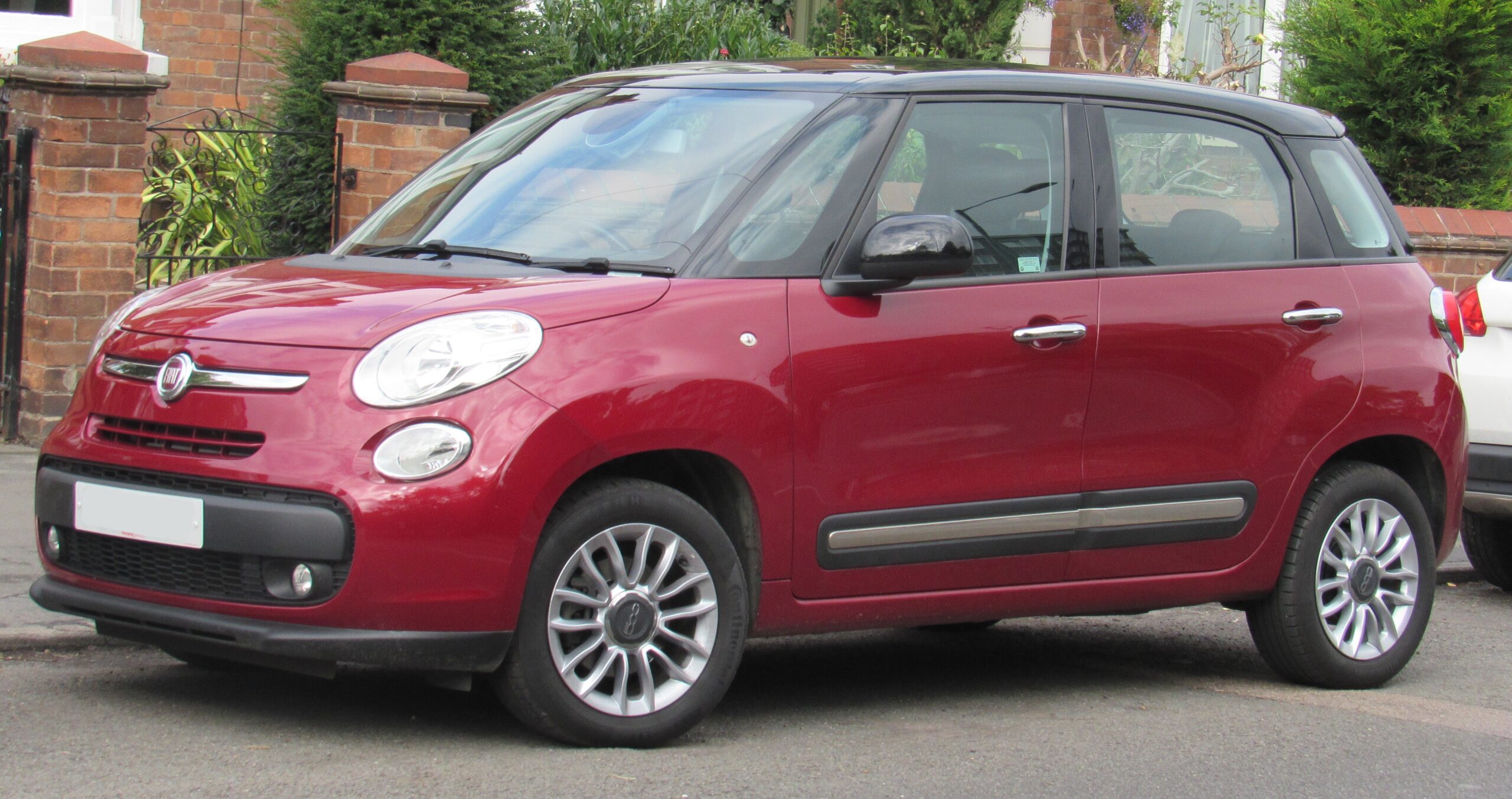
5. **Fiat 500L**:
Fiat has struggled to gain traction in the U.S. market since its early 2010s return. While the standard Fiat 500 charmed with its quirky Italian appeal, most other models missed the mark. Among these, the 500L stands out as a particular disappointment, an attempt to broaden Fiat’s appeal that ultimately backfired dramatically and became a symbol of its market struggles.
The idea behind the 500L seemed straightforward: stretch the 500, add two more doors, and boost cargo capacity for greater practicality. This theoretical expansion aimed to transform the compact city car into a more versatile, family-friendly vehicle, blending classic Italian style with everyday usability. It promised to take the 500’s essence and make it universally appealing.
Crucially, the 500L abandoned everything that made the original 500 appealing. Its odd, ungainly proportions lacked charm, and its driving experience was bland, a stark contrast to spirited Italian expectations. Compounding these issues were notorious reliability problems, turning ownership into a headache. Critics highlighted its cheap-feeling interior, which couldn’t compete with other compact crossovers. The 500L was a misstep, reinforcing the notion that Fiat should focus on its classic 500, rather than struggling in crowded, unfamiliar segments.
Car Model Information: 2018 FIAT 500L Lounge
Name: Fiat 500L
Manufacturer: Fiat
Production: 2012–2022
ModelYears: 2014–2020 (North America)
Assembly: Kragujevac
Class: Mini MPV
BodyStyle: hatchback
Layout: Front-engine, front-wheel drive layout
Platform: GM Fiat Small platform
Engine: Twinair engine,Turbocharger,Straight-twin engine
Transmission: Fiat Powertrain Technologies,Fiat Powertrain Technologies,Fiat Powertrain Technologies,Fiat Powertrain Technologies,Aisin AW
Wheelbase: 2612 mm
Abbr: on
Length: 4140 mm
Width: 1780 mm
Height: 1660 mm
Weight: 1245 kg
Related: Fiat Toro,Jeep Renegade,Fiat 500X,Fiat Tipo (2015)
Predecessor: Lancia Musa,Fiat Multipla,Chrysler PT Cruiser
Successor: Fiat 600 (2023)
Designer: Roberto Giolito
Sp: uk
Categories: 2010s cars, All articles with dead external links, Articles with dead external links from April 2024, Articles with permanently dead external links, Articles with short description
Summary: The Fiat 500L is a mini MPV manufactured by Fiat under the Fiat Serbia joint venture and marketed globally from its debut at the 2012 Geneva Motor Show until its discontinuation in 2022.
Based on a variant of the FCA Small Wide platform, the 500L uses Fiat’s Multiair variable valve timing engine technology and monovolume cab forward architecture: a packaging concept that prioritizes passenger and cargo volume. The 500L is noted for its high H-point seating, high roof, tall greenhouse, double A pillar, wide field of visibility—and its reconfigurable interior system marketed as Cargo Magic Space.
Initially only available in a 2-row, 5-seat configuration, the lengthened 3-row, 7-seat variant, called the “500L Living”, began production in 2013 for the European market. For model year 2018, the 500L received an intermediate facelift, with revised front and rear fascias along with In-car entertainment (ICE) updates and interior revisions. By early 2018, production reached 500,000 units. The 500L was discontinued in the North American market after model year 2020.
The 500L derives its name from Fiat’s widely known 500 models, including the original 1957 Fiat 500 and the current Fiat 500, introduced in 2007. Underscoring its increased length and overall size over other 500 variants, the suffix L denotes “large”, “light” and “loft”.
Get more information about: Fiat 500L
Buying a high-performing used car >>>
Brand: Fiat Model: 500L
Price: $15,999 Mileage: 69,728 mi.
Read more about: More Than Skin Deep: 14 Great-Looking Vintage and Iconic Cars Mechanics Couldn’t Stand Fixing
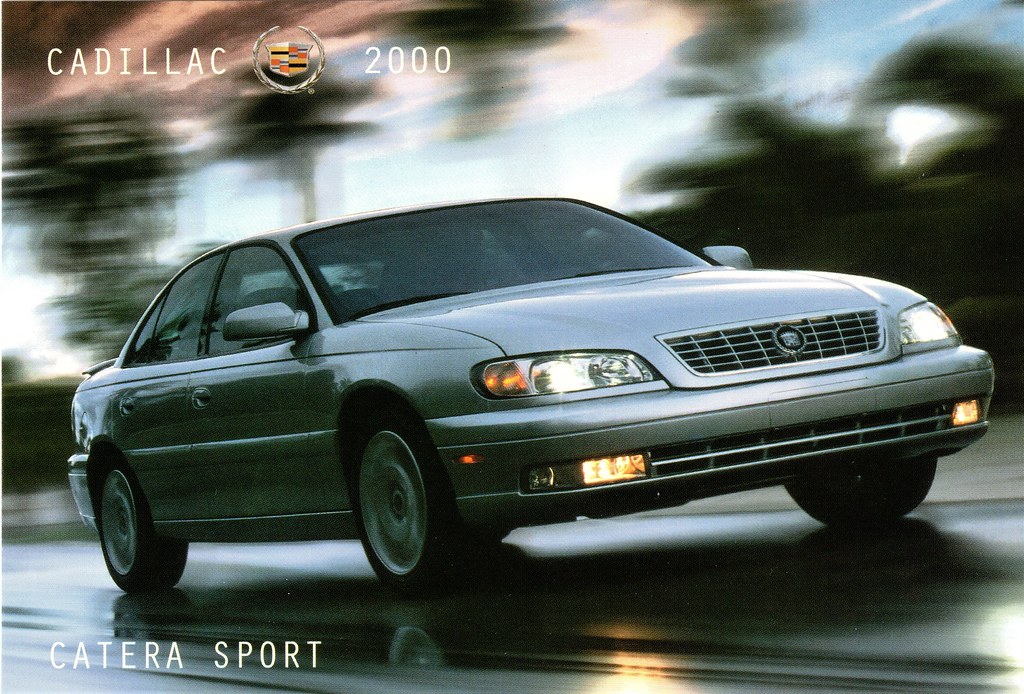
6. **Cadillac Catera**:
The Cadillac Catera epitomizes the brand’s struggles in the late 1990s. By then, Cadillac had squandered much of its prestige, and the Catera became a significant blow to its tarnished image. This wasn’t a true Cadillac in spirit; it was a rebadged Opel Omega, a European sedan more suited for a Chevrolet badge than the “Standard of the World” moniker, causing an identity crisis for the struggling luxury marque.
Intended to challenge rivals like the BMW 3 Series and Mercedes C-Class, the Catera was woefully unprepared. Its uninspiring 200-horsepower 3.0-liter V6, lackluster handling, and numerous reliability issues doomed it from the start. It simply couldn’t compete on the level expected of a luxury sedan, falling short in every critical aspect of performance and refinement.
Adding to its woes was the confusing marketing campaign, famously touting it as “The Caddy That Zigs,” which further blurred Cadillac’s identity. While Cadillac did course-correct in the early 2000s, the Catera remains a potent reminder of the consequences when a venerable automotive brand loses focus and dilutes its core essence with ill-conceived product choices, leaving a legacy of disappointment.
Car Model Information: 1997 Cadillac Catera Standard
Name: Cadillac Catera
Caption: 1997–1999 Catera
Manufacturer: Opel
Aka: Opel Omega
Production: 1996–2001
ModelYears: 1997–2001
Successor: Cadillac CTS
Platform: General Motors V platform (RWD)
Assembly: Rüsselsheim,State of Hesse,Germany
Related: Opel Omega
Class: Compact executive car
BodyStyle: sedan (car)
Engine: General Motors 54° V6 engine#L81,V6
Transmission: GM 4L30-E transmission,automatic transmission
Length: 194.0 in
Abbr: on
Wheelbase: 107.5 in
Width: 70.3 in
Height: 56.3 in
Weight: 3897 lb
Layout: FR layout
Categories: Articles with short description, Cadillac vehicles, Cars discontinued in 2001, Cars introduced in 1996, Commons category link from Wikidata
Summary: The Cadillac Catera is a compact executive car marketed from 1997 to 2001 model years by Cadillac over a single generation in the United States, Canada and GCC. As a rebadged variant of the Opel Omega B, the Catera was manufactured by Opel in Rüsselsheim, Germany, and was underpinned by GM’s V-body platform. Approximately 95,000 units were built and sold over five model years.
Get more information about: Cadillac Catera
Buying a high-performing used car >>>
Brand: Cadillac Model: Catera
Price: $6,980 Mileage: 67,795 mi.
Read more about: From Quirky to Coveted: 14 Ugly American Cars That Are Now Seriously Cool Collector’s Items
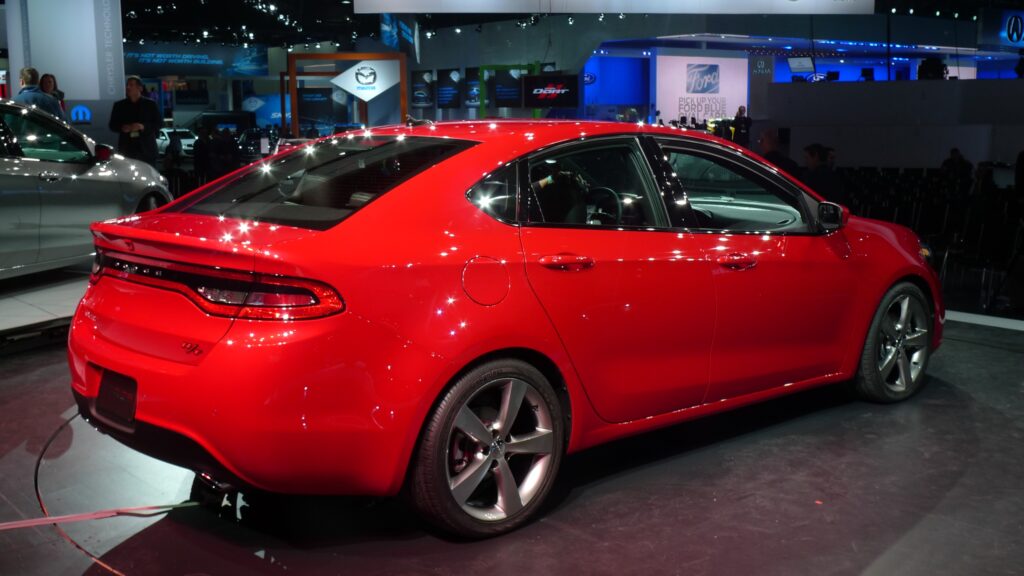
7. **Dodge Dart**:
The Dodge Dart’s 2013 revival, after decades, aimed to reestablish the brand in the compact car segment with a bold, sporty identity. Eye-catching commercials, aggressive design, and promises of high-performance GT trims generated significant buzz, suggesting Dodge would inject excitement into a traditionally mundane category. Hype built around the potential for a fresh, engaging compact.
However, the compelling marketing narrative ultimately failed to match the vehicle’s reality. The Dart, despite its aggressive looks, proved to be a case of unfulfilled promises, falling short of high expectations. Buyers hoping for a genuine competitor to cars like the Honda Civic Si or Ford Focus ST were left profoundly disappointed by what Dodge delivered in terms of driving experience and performance.
Its undoing stemmed from underwhelming engine options, which felt uninspiring for a sporty car, and unengaging driving dynamics that lacked the expected responsiveness. Furthermore, the interior, despite initial promises, was often uncomfortable and lacked the refinement of rivals. The Dart’s inability to deliver on its core promises in a competitive segment led to its premature demise, serving as a cautionary tale: hype without substance leads to market failure.
The journey through automotive ambition continues as we turn our attention to more recent contenders that, despite immense initial fanfare, ultimately faltered. From groundbreaking electric vehicles to opulent luxury sedans and performance-focused hybrids, these seven modern machines promised to redefine their segments. Yet, they too drove straight into the annals of regret, struggling with everything from build quality and limited range to an inability to capture market acceptance, proving that even in the current era of advanced technology, not all that glitters on the showroom floor is truly gold.
Car Model Information: 2013 Dodge Dart Limited/GT
Name: Dodge Dart
Caption: 1966 Dodge Dart GT 2-door hardtop
Manufacturer: Dodge
Production: 1959–1976 (US market)
ModelYears: 1960–1976 (US market)
Class: Full-size
Layout: FR layout
Predecessor: Dodge Coronet#Fourth generation (1957–1959)
Related: Plymouth Valiant,Chrysler Valiant,Dodge Phoenix
Successor: Dodge Aspen,Dodge Diplomat,Talbot Tagora
Categories: 1970s cars, All articles with unsourced statements, Articles with short description, Articles with unsourced statements from December 2023, Articles with unsourced statements from May 2025
Summary: The Dodge Dart is a line of passenger cars produced by Dodge from the 1959 to 1976 model years in North America, with production extended to later years in various other markets.
The production Dodge Dart was introduced as a lower-priced full-size model in 1960 and 1961, but became a mid-size car for one model year for 1962, and was then reduced to a compact for two generations, from 1963 to 1976.
Chrysler had first used ‘Dart’ name plates on two Italian styled show cars, in 1956 and 1957, before it became a Dodge model name. The Dart nameplate was resurrected for a Fiat-derived compact car that was introduced in 2012.
Get more information about: Dodge Dart
Buying a high-performing used car >>>
Brand: Dodge Model: Dart
Price: $6,971 Mileage: 123,411 mi.
Read more about: 15 Vehicles Owners Wish They’d Never Bought: Your Essential Guide to Avoiding Automotive Regrets
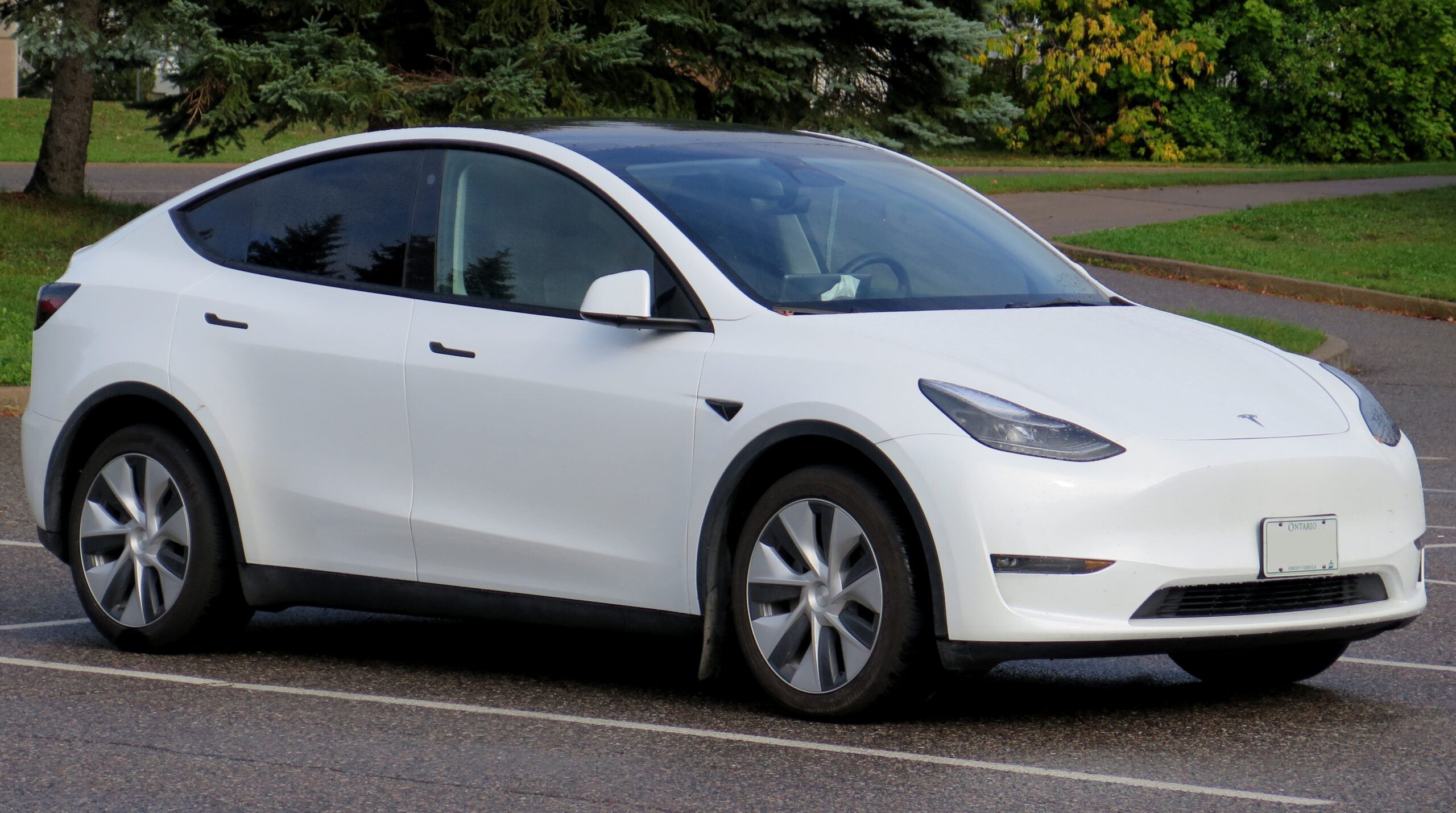
8. **Tesla Model X**
The automotive world watched with bated breath when Tesla unveiled the Model X, a vehicle poised to redefine the luxury SUV segment with its audacious design and a suite of futuristic features. The promise of falcon-wing doors, a massive touchscreen interface, and groundbreaking electric performance generated an almost unprecedented level of hype, positioning the Model X as more than just a car—it was a statement, a glimpse into tomorrow’s motoring.
However, the journey from groundbreaking concept to everyday reality proved far rockier than anticipated. Early adopters, eager to embrace the future, quickly discovered that the Model X was plagued by a myriad of quality control issues. J.D. Power reports consistently ranked the Model X below average in reliability, highlighting significant concerns that dampened the initial excitement.
Chief among these woes were the very features that made the Model X so distinctive: its complex falcon-wing doors. Owners reported frequent malfunctions, alignment issues, and slow operation, often turning a show-stopping design element into a source of frustration. The advanced touchscreen system, while innovative, also contributed to reliability concerns, leading to a user experience that often fell short of the premium expectation. The Model X, despite its visionary design, served as a stark reminder that even the most ambitious innovations must first master the fundamentals of quality and reliability.
Car Model Information: 2020 Volvo XC60 T5 Momentum
Name: Tesla Model X
Manufacturer: Tesla, Inc.
Production: 2015–present
Assembly: unbulleted list
Designer: Franz von Holzhausen
Class: Crossover (automobile)
BodyStyle: 5-door SUV
Layout: unbulleted list
Doors: unbulleted list
Related: Tesla Model S
Motor: unbulleted list
Title: Discontinued
Transmission: unbulleted list
Battery: unbulleted list
ElectricRange: FTP-75
Wheelbase: cvt
Length: cvt
Width: cvt
Height: cvt
Weight: unbulleted list
Sp: us
Categories: 2020s cars, All Wikipedia articles in need of updating, All Wikipedia articles written in American English, All articles containing potentially dated statements, All articles lacking reliable references
Summary: The Tesla Model X is a battery electric mid-size luxury crossover SUV built by Tesla, Inc. since 2015. Developed from the full-sized sedan platform of the Tesla Model S, the vehicle uses distinctive falcon wing doors for rear passenger access.
The Model X has an EPA size class as an SUV, and shares around 30 percent of its content with the Model S, half of the originally planned 60 percent, and weighs about 10 percent more. Both the Model X and Model S are produced at the Tesla Factory in Fremont, California. The prototype was unveiled at Tesla’s design studios in Hawthorne, California, on February 9, 2012. First deliveries of the Model X began in September 2015. After one full year on the market, in 2016, the Model X ranked seventh among the world’s best-selling plug-in cars. A refresh of the Tesla Model X was introduced in 2021, offering a new “Plaid” performance model, along with a revised interior, powertrain, and suspension.Another update of the Model X was introduced in June 2025 with a new front bumper camera, new wheel designs, increased third-row space, dynamic ambient lighting, and adaptive headlights. The updates are similar to the Model S, which was updated at the same time.
As of July 2025, the Model X is available as a Long-Range version with an estimated EPA range of 352 miles (566 km) and a high performance “Plaid” version with an estimated EPA range of 335 miles (539 km).
Get more information about: Tesla Model X
Buying a high-performing used car >>>
Brand: Tesla Model: Model X
Price: $28,995 Mileage: 39,859 mi.
Read more about: Top 6 Famous People That Ruined Their Career With One Photo
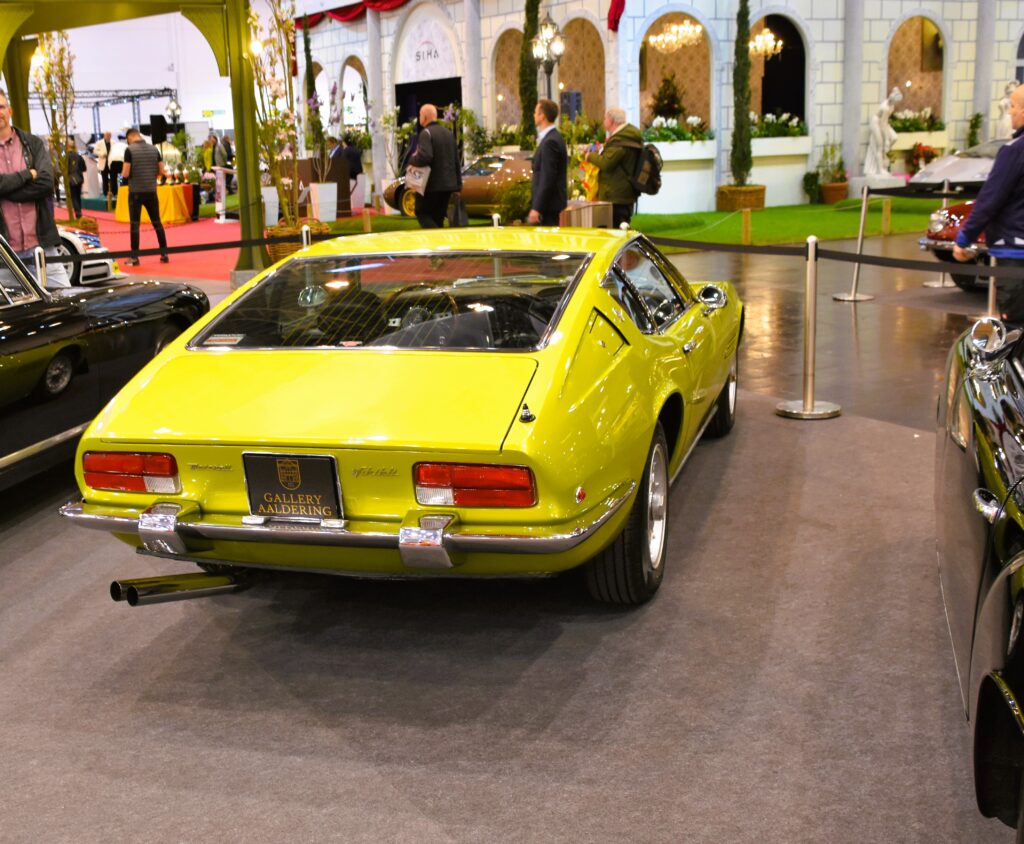
9. **Maserati Ghibli**
Maserati, a name synonymous with Italian luxury and performance, attempted to broaden its appeal with the Ghibli, marketing it as an “affordable” entry point into the exclusive world of the Trident badge. The idea was to bring Maserati’s distinctive flair, powerful engines, and opulent interiors to a wider audience, hoping to capture buyers who aspired to continental elegance without the full financial leap into flagship models.
Despite the allure of its Italian heritage and sleek lines, the Ghibli quickly drew criticism for falling short of the very expectations it sought to create. Automotive purists and luxury car buyers alike found that the Ghibli lacked the performance prowess and the sheer opulence typically associated with the Maserati brand. It felt, to many, like a compromise—a diluted experience that struggled to justify its premium price tag.
Adding to its woes, the Ghibli suffered from persistent reliability issues, a significant hurdle for any luxury vehicle. Consumer Reports specifically noted the Ghibli’s dependability as “far below average,” a damning indictment for a brand that trades on exclusivity and craftsmanship. Owners often found themselves grappling with unexpected faults, proving that even a storied Italian badge couldn’t mask fundamental quality shortcomings, ultimately making the Ghibli a regrettable purchase for many.
Car Model Information: 2018 Maserati Ghibli Base
Name: Maserati Ghibli
Caption: 2018 Maserati Ghibli GranLusso
Manufacturer: Maserati
Assembly: Modena,Grugliasco,Turin
Class: Grand tourer,Executive car
BodyStyle: fastback,coupé,Roadster (automobile),Sedan (automobile)
Production: AM115: 1967–1973,AM336: 1992–1998,M157: 2013–2023
Categories: 1970s cars, 1990s cars, 2010s cars, Articles with short description, CS1 Italian-language sources (it)
Summary: Maserati Ghibli is the name of three different cars produced by Italian automobile manufacturer Maserati: the AM115, a V8 grand tourer from 1967 to 1973; the AM336, a V6 twin-turbocharged coupé from 1992 to 1998; and the M157, an executive saloon from 2013 to 2023.
Ghibli is the Libyan Arabic name for the hot dry south-westerly wind of the Libyan desert.
Get more information about: Maserati Ghibli
Buying a high-performing used car >>>
Brand: Maserati Model: Ghibli
Price: $16,980 Mileage: 66,162 mi.
Read more about: Buyer’s Guide: 14 Classic Cars That Are More Pitfall Than Pride, According to Seasoned Automotive Experts
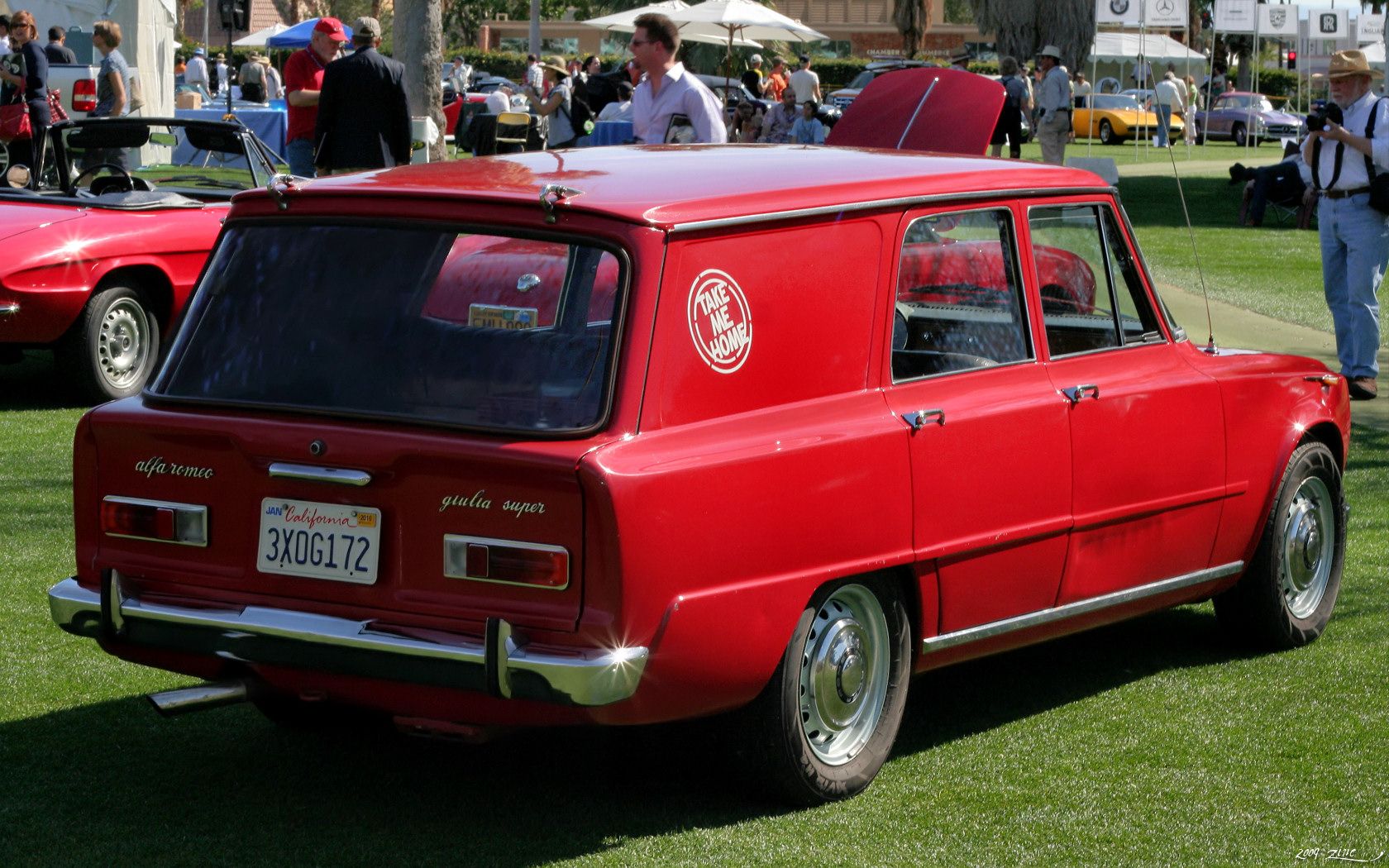
10. **Alfa Romeo Giulia**
The return of the Alfa Romeo Giulia was met with fervent anticipation, especially among enthusiasts yearning for the brand’s glorious past to be rekindled. Marketed as a luxury sports sedan with a passionate Italian soul, the Giulia promised exhilarating driving dynamics, stunning looks, and a return to form that would directly challenge German rivals. It was poised to be the vehicle that finally revived Alfa Romeo’s reputation in the crucial luxury sedan market.
While the Giulia certainly delivered on its visual appeal and, to some extent, its engaging driving experience, its aspirations were severely undermined by a concerning pattern of mechanical failures. J.D. Power ranked the Giulia low in reliability, indicating a systemic issue rather than isolated incidents. This was particularly frustrating for owners who were otherwise captivated by the car’s performance.
The frequent reporting of persistent electrical glitches and transmission woes became a significant black mark against the Giulia’s image. These issues meant that despite its sleek design and the undeniable thrill of driving it when it was working perfectly, the car’s constant need for repairs transformed the ownership experience into a letdown. The Giulia, in essence, became a testament to the fact that passion and performance, without rock-solid reliability, can only take a luxury brand so far.
Car Model Information: 2023 Dodge Charger SXT
Name: Alfa Romeo Giulia (Type 105)
Caption: Alfa Romeo Giulia Super
Manufacturer: Alfa Romeo
Production: 1962–1978
Assembly: Portello (district of Milan),Alfa Romeo Portello Plant,Milan
Designer: Giuseppe Scarnati
Class: Compact executive car
BodyStyle: notchback,Sedan (car)
Layout: Front-engine, rear-wheel-drive layout
Related: Alfa Romeo 105/115 Series Coupés,Alfa Romeo 1750 Berlina,Alfa Romeo Gran Sport Quattroruote,Alfa Romeo Spider
Engine: Alfa Romeo Twin Cam engine,1.6 L Twin Cam I4 (petrol),Perkins Engines
Transmission: Manual transmission
Wheelbase: 2510 mm
Abbr: on
Length: 4140 mm
Width: 1560 mm
Height: 1430 mm
Weight: convert
Predecessor: Alfa Romeo Giulietta (750/101)
Successor: Alfa Romeo Giulietta (116)
Sp: uk
Categories: 1970s cars, Alfa Romeo vehicles, Articles with short description, CS1 Italian-language sources (it), Cars introduced in 1962
Summary: Alfa Romeo Giulia (Italian pronunciation: [ˈdʒuːlja]) is the name of three not directly related model (line)s from Italian carmaker Alfa Romeo. The first were the four-door Type 105 entry-level compact executive sports sedans produced from 1962 to 1978; the second are the updated (mainly up-engined) Spider, Sprint, and Sprint Speciale Alfa Giuliettas, and in 2015, Alfa Romeo revived the Giulia name, again for a compact executive car (type 952).
Alfa Romeo was one of the first mainstream manufacturers to put a powerful engine in a light-weight 1 tonne (2,205 lb) four-door car for mass production. The Type 105 Giulia was equipped with a light alloy twin overhead camshaft four-cylinder engine similar to that of the earlier Giulietta (750/101) range, available in 1.3-litre (1,290 cc) and 1.6-litre (1,570 cc) versions. Various configurations of carburetors and tuning produced power outputs from about 80 to about 110 bhp (55 to 75 kW), coupled in most cases to 5-speed manual transmission.
Giulia sedans were noted for lively handling and impressive acceleration among small European four-door sedans of their era, especially considering modest engine sizes offered. The popular Super version with the twin carburettor 1.6 litre engine had a top speed of 170 km/h (106 mph) and accelerated from 0 to 100 km/h (62 mph) in about 12 seconds, better than many sports cars of the late 1960s and early 1970s. When leaving the factory all variations of the Giulia originally fitted either Pirelli Cinturato 165HR14 or 155HR15 tyres (CA67).
The styling of the three-box four-door sedan was somewhat wanting, with its three main volumes all truly square and boxy, softened only by detailing of the front and bonnet, roofline, and boot. Using a wind tunnel during development helped designers to find a remarkably aerodynamic shape with a drag coefficient of Cd=0.34, particularly low for a saloon of the era.
The Giulia Spider was succeeded by the Alfa Romeo Spider (105/115) in 1966.
Get more information about: Alfa Romeo Giulia
Buying a high-performing used car >>>
Brand: Alfa Romeo Model: Giulia
Price: $30,999 Mileage: 53,386 mi.
Read more about: 14 Convertibles from the ’60s and ’70s That Made You Feel Like a Movie Star

11. **Nissan Leaf (Second Generation)**
The second-generation Nissan Leaf arrived with ambitious goals: to push electric vehicles firmly into the mainstream. Building on the pioneering efforts of its predecessor, this new iteration promised improved range, enhanced technology, and a more conventional aesthetic, all aimed at making EV ownership accessible and appealing to a broader audience. Nissan positioned it as a pragmatic, everyday electric car for the masses.
However, despite the admirable intentions, the Leaf’s second coming struggled to truly impress in the burgeoning EV landscape. Its most significant drawback was its limited range, initially just 150 miles, which, while an improvement over the first generation, simply couldn’t compete with the rapidly advancing offerings from Tesla and other rivals. This range anxiety remained a substantial barrier for many potential buyers.
Compounding the issue were concerns over battery degradation. Consumer Reports, among others, found that many owners experienced a rapid loss of battery capacity over time, directly impacting the car’s usable range and resale value. This crucial flaw made the Leaf feel like a compromise, preventing it from fulfilling its destiny as a mainstream EV champion and instead leaving it in the shadow of more capable, albeit often pricier, electric vehicles.
Car Model Information: 2018 Nissan Titan SV
Name: Nissan Leaf
Caption: A second generation Nissan Leaf
Manufacturer: Nissan
Production: October 2010 – present
ModelYears: 2011–present
Class: Unbulleted list
BodyStyle: Unbulleted list
Layout: Front-engine, front-wheel-drive layout
Predecessor: Unbulleted list
Categories: 2020s cars, All articles containing potentially dated statements, All articles with dead external links, Articles containing Japanese-language text, Articles containing potentially dated statements from December 2015
Summary: The Nissan Leaf (Japanese: 日産・リーフ, Hepburn: Nissan Rīfu; stylized as LEAF) is a battery-electric car manufactured by Nissan, produced since 2010. It was offered exclusively as a 5-door hatchback until 2025, which since then has become a crossover SUV model. The term “LEAF” serves as a backronym to leading environmentally-friendly affordable family car.
The Leaf was unveiled on 1 August 2009 as the world’s first mass market electric and zero-emission vehicle. Among other awards and recognition, it received the 2010 Green Car Vision Award, the 2011 European Car of the Year, the 2011 World Car of the Year, and the 2011–2012 Car of the Year Japan. The Leaf’s range on a full charge has been steadily increased from 117 km (73 miles) to 364 km (226 miles) (EPA rated) by the use of larger battery packs and several minor improvements.
As of September 2021, European sales totalled more than 208,000, and as of December 2021, over 165,000 had been sold in the U.S., and 157,000 in Japan. Global sales across both generations totalled 577,000 by February 2022. The Leaf was the world’s all-time top selling plug-in electric car until it was surpassed in early 2020 by the Tesla Model 3.
Get more information about: Nissan Leaf
Buying a high-performing used car >>>
Brand: Nissan Model: Leaf
Price: $22,685 Mileage: 89,835 mi.
Read more about: Navigating the Road: Unpacking 14 Vehicles Known for Sketchy Driver Reputations and Notorious Reliability Issues
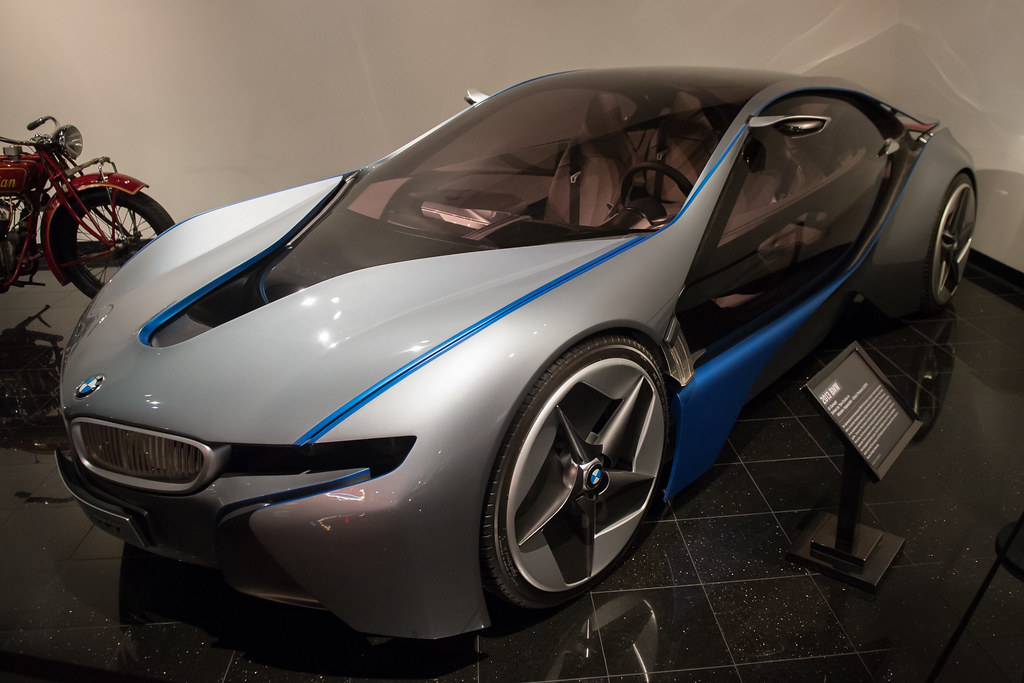
12. **BMW i8**
BMW positioned the i8 as nothing less than the “sports car of the future,” a visionary blend of hybrid technology and the brand’s legendary performance engineering. With its striking, almost concept-car-like aesthetics, carbon fiber construction, and a sophisticated plug-in hybrid drivetrain, the i8 promised an eco-conscious supercar experience that was both thrilling and responsible, pushing the boundaries of what a performance vehicle could be.
Yet, for all its futuristic appeal, the i8 often left enthusiasts feeling somewhat underwhelmed in the driving department. The complex hybrid drivetrain, while technologically advanced, translated into a driving experience that, while quick, lacked the raw, visceral engagement expected of a true BMW sports car. Its limited all-electric range meant that the “electric car” aspect was more of a novelty than a practical daily feature, particularly for its steep price tag.
Ultimately, the high cost of entry, coupled with performance that didn’t quite match its supercar looks or the lofty “sports car of the future” moniker, meant the i8 struggled to capture the hearts of the broader sports car market. It was a remarkable engineering feat and a design icon, but it never fully delivered on the promise of a truly revolutionary driving experience, becoming more of a technological showcase than a widely revered performance hybrid.
Car Model Information: 2016 BMW i8 Base
Name: BMW i8 (I12/I15)
Manufacturer: BMW
Production: April 2014 – June 2020 , (20,465 units)
Assembly: Saxony,Leipzig
Predecessor: BMW ActiveE
Successor: BMW 8 Series (G15),BMW M8
Class: Sports car
BodyStyle: coupé
Layout: Transverse engine,mid-engine,all-wheel-drive
Motor: 131 hp
Order: EPA
Abbr: on
Engine: turbocharged,I3 engine
Battery: kWh,lithium-ion battery
Transmission: Aisin,AWTF-80 SC
Drivetrain: Plug-in hybrid
Wheelbase: Convert
Length: Convert
Width: Convert
Height: Convert
Weight: Convert
Range: 500 km
ElectricRange: 37 km
Related: BMW i3
Designer: Vision EfficientDynamics
Doors: Butterfly doors
Powerout: 369 hp
ModelYears: 2014–2020
Categories: All articles containing potentially dated statements, All articles that are excessively detailed, All articles with style issues, Articles containing potentially dated statements from October 2016, Articles containing potentially dated statements from September 2016
Summary: The BMW i8 is a plug-in hybrid sports car developed by BMW. The i8 was part of BMW’s electrified fleet and was marketed under the BMW i sub-brand. The production version of the BMW i8 was unveiled at the 2013 Frankfurt Motor Show and was released in Germany in June 2014. Deliveries to retail customers in the U.S. began in August 2014. A roadster variant was launched in May 2018. Production ended in June 2020.
The 2015 BMW i8 accelerated from 0 to 100 km/h (62 mph) in 4.4 seconds and had an electronically limited top speed of 250 km/h (155 mph). The 2015 model year i8 had a 7.1-kWh lithium-ion battery pack that delivered an all-electric range of 37 km (23 mi) under the New European Driving Cycle. Under the U.S. EPA cycle, the range in EV mode was 24 km (15 mi). The battery capacity of both the BMW i8 Roadster and the i8 Coupe was increased to 11.6 kWh in 2018, allowing the NEDC electric range to rise to 55 km (34 mi) for the coupé and 53 km (33 mi) for the roadster.
The BMW i8 coupé had a fuel efficiency of 2.1 L/100 km (134.5 mpg‑imp; 112.0 mpg‑US) under the NEDC test with carbon emissions of 49 g/km. The EPA rated the i8 combined fuel economy at 76 MPGe (2.1 L gasoline-equivalent/100 km; 91 mpg-imp gasoline-equivalent) and 29 miles per gallon (6.7L/100 km) when running in pure gasoline mode.
Get more information about: BMW i8
Buying a high-performing used car >>>
Brand: BMW Model: i8
Price: $49,999 Mileage: 57,285 mi.
Read more about: Beyond the Roar: Unpacking the Revolutionary Soundscape of Electric Vehicles and Its Far-Reaching Impact

13. **Jeep Cherokee (2014-2020)**
The 2014-2020 generation of the Jeep Cherokee rolled out with significant hype, promising a compelling blend of Jeep’s renowned off-road capability and the everyday practicality demanded by modern SUV buyers. Its distinctive, somewhat polarizing front fascia certainly grabbed attention, and the promise of a vehicle that could conquer both urban jungles and rugged trails resonated with a broad spectrum of consumers looking for versatility.
However, this particular iteration of the Cherokee proved to be a source of considerable frustration for many owners, largely due to notorious transmission problems. Consumer Reports specifically highlighted these issues, especially during the early years of this generation, where the nine-speed automatic transmission often exhibited erratic shifting, hesitant responses, and a general lack of refinement that detracted significantly from the driving experience.
Beyond the transmission woes, the Cherokee was also plagued by frequent recalls and a litany of other mechanical issues that tarnished its reputation for reliability. This constant stream of problems turned what was supposed to be a dependable, adventurous SUV into a source of headaches and repeated trips to the service department. It became, for many, one of the most disappointing SUVs in recent memory, failing to live up to the rugged, reliable image synonymous with the Jeep brand.
Car Model Information: 2022 Jeep Cherokee X
Name: Jeep Cherokee
Caption: Fifth generation (KL)
Manufacturer: Jeep
Aka: Jeep Liberty
ModelYears: unbulleted list
Class: unbulleted list
Layout: unbulleted list
Chassis: unbulleted list
Categories: All-wheel-drive vehicles, Anti-Indigenous racism in the United States, Articles with short description, Compact sport utility vehicles, Crossover sport utility vehicles
Summary: The Jeep Cherokee is a line of sport utility vehicles (SUV) manufactured and marketed by Jeep over six generations. Marketed initially as a variant of the Jeep Wagoneer (SJ), the Cherokee has evolved from a full-size station wagon (before the SUV description came into use) to one of the first compact SUVs and into its latest generation as a crossover SUV.
Named after the Cherokee tribe of Native Americans in the United States, Jeep has used the nameplate in some capacity since late 1973 when American Motors Corporation (AMC) introduced the 1974 model year line.
Production of the Cherokee ended in February 2023. The Cherokee nameplate has since been used by the Grand Cherokee and its extended version, the Grand Cherokee L.
Get more information about: Jeep Cherokee
Buying a high-performing used car >>>
Brand: Jeep Model: Cherokee
Price: $26,990 Mileage: 26,492 mi.
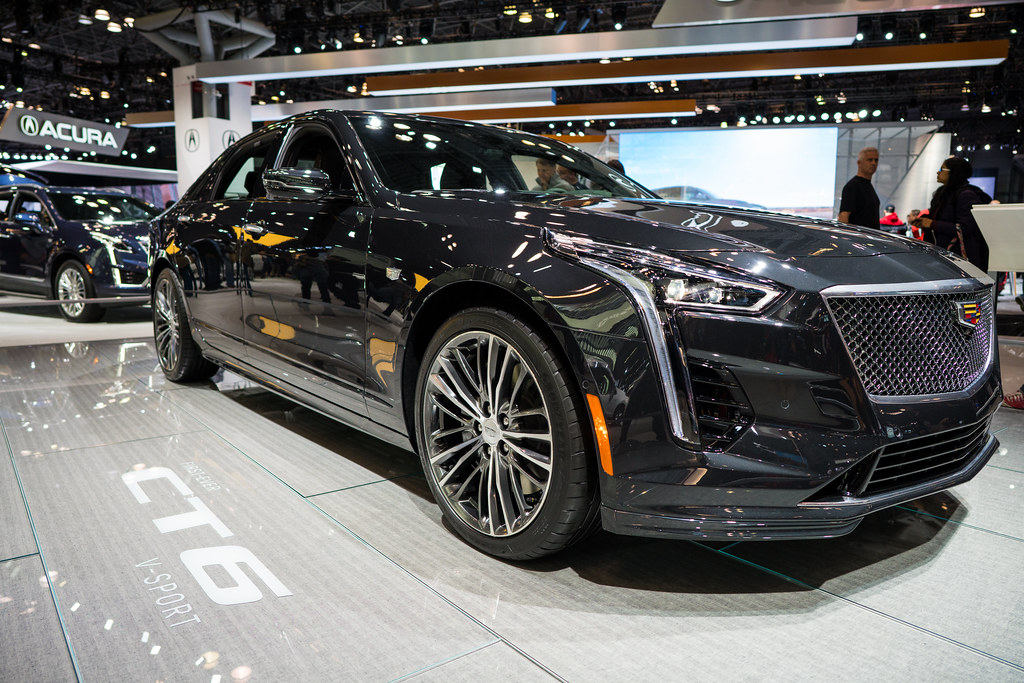
14. **Cadillac CT6**
The Cadillac CT6 was launched with a mission to reclaim American luxury’s prominent position on the global stage, directly challenging the dominance of European titans. As Cadillac’s flagship sedan, it was engineered to showcase cutting-edge technology, sophisticated design, and a return to the opulent comfort that once defined the brand. The inclusion of advanced features like Super Cruise, a hands-free driving system, further heightened expectations for this ambitious model.
Despite its grand aspirations and technological advancements, the CT6 struggled to carve out a meaningful niche in a fiercely competitive market. Critics frequently pointed to its underwhelming interior quality, which, while respectable, often felt a step below the lavishness and craftsmanship offered by its German rivals. This perception of falling short in tactile luxury was a significant blow to its flagship status.
Furthermore, the CT6’s performance, while adequate, often felt lackluster for a car intended to lead Cadillac’s charge, failing to deliver the dynamic engagement or raw power offered by competitors. Coupled with a lack of strong market penetration and sales figures that never truly took off, Cadillac ultimately decided to discontinue the model. The CT6 remains a poignant example of a vehicle with immense potential that, despite its innovations, couldn’t fully capture the market as intended, underscoring the formidable challenge of competing at the pinnacle of the luxury sedan segment.
Car Model Information: 2018 Cadillac CT6 3.0L Twin Turbo Platinum
Name: Cadillac CT6
Manufacturer: General Motors
Production: January 2016–present
ModelYears: 2016–2020 (North America),2016–present (China)
Class: Full-size,luxury car
BodyStyle: Sedan (car)
Sp: us
Successor: Cadillac Celestiq
Categories: 2010s cars, 2020s cars, All-wheel-drive vehicles, Articles with Chinese-language sources (zh), Articles with short description
Summary: The Cadillac CT6 (short for Cadillac Touring 6) is a full-size luxury car manufactured by Cadillac between 2016 and 2020 over two generations. The first generation CT6 was introduced at the 2015 New York International Auto Show and went on sale in the U.S. in March 2016. It is the first car to adopt the brand’s revised naming strategy, as well as the first rear-wheel drive full-size Cadillac sedan since the Fleetwood was discontinued in 1996.
In 2020, the CT6 was discontinued in the United States, to be replaced by the forthcoming Cadillac Celestiq liftback sedan.
Get more information about: Cadillac CT6
Buying a high-performing used car >>>
Brand: Cadillac Model: CT6
Price: Not Priced Mileage: 59,119 mi.
Read more about: Beyond the Billionaire Bling: An Insider’s Look at Warren Buffett’s 10 Unexpected Car Choices and Driving Philosophies
The journey through these automotive disappointments serves as a powerful reminder that in the exhilarating, fast-paced world of car manufacturing, ambition and marketing buzz alone are rarely enough. From electric pioneers wrestling with their own revolutionary designs to luxury marques stumbling in their quest for new market segments, each of these vehicles, despite immense initial hype, ultimately fell short. They are cautionary tales, illustrating that whether it’s fundamental reliability, uninspiring performance, or a complete misjudgment of consumer expectations, the road from concept to revered classic is fraught with peril. For us car enthusiasts, these stories underscore a vital lesson: always look beyond the glossy advertisements and slick presentations. Dig deep, do your research, and ensure that the machine you choose to bring into your life truly lives up to its promise, and most importantly, your expectations.



